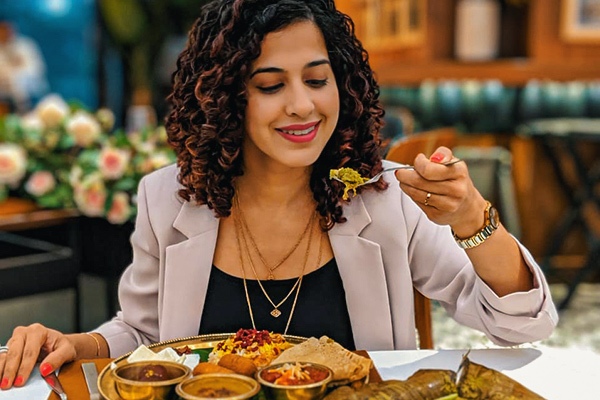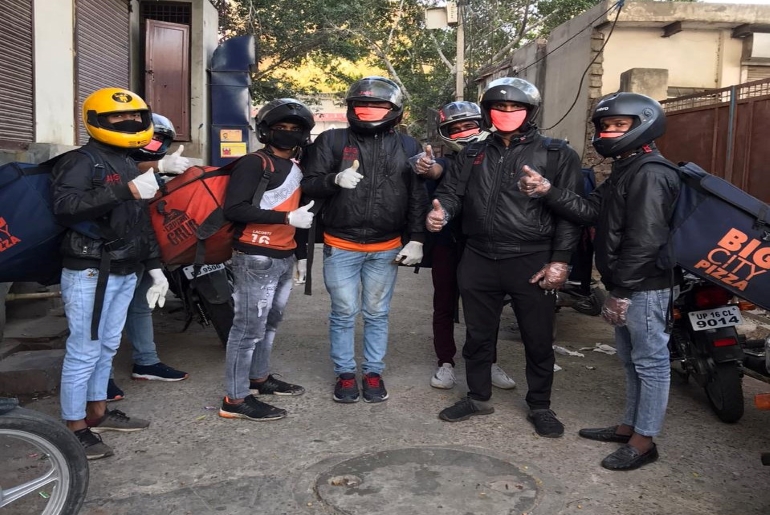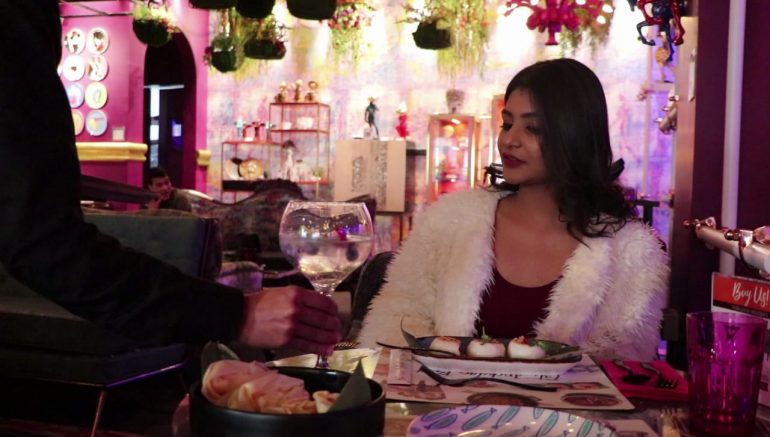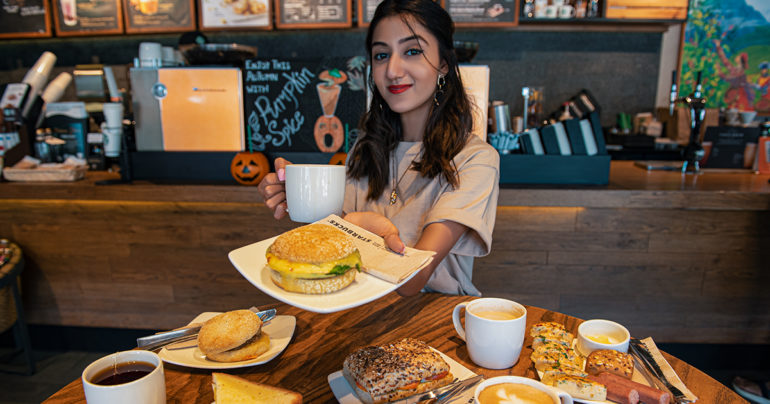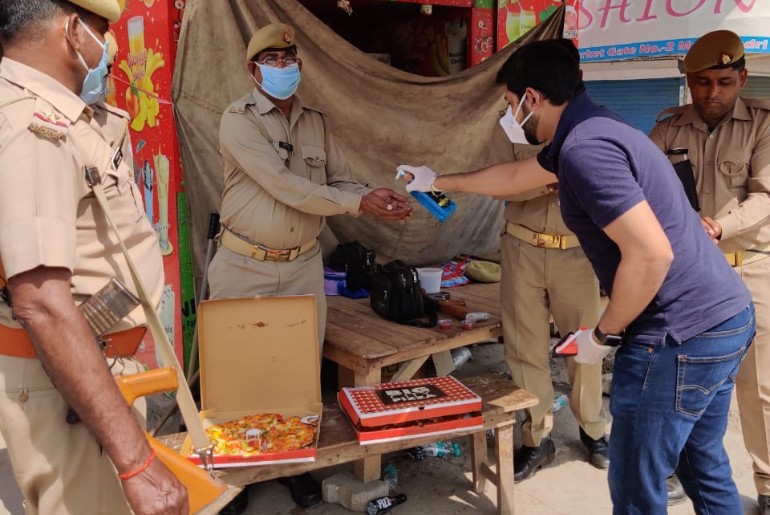A night out in metro cities was meant to be chilling in a bar or a restaurant packed with people. Kitty parties had taken over the restaurants on weekdays for lunches and brunches. Celebrations were never complete till we raised a toast at a lounge, discotheque or a fine dine restaurant.
The restaurant industry contributed around 3% to the country’s GDP, being the single largest employer with more than 73 lakhs people. Well, that was life before COVID-19 decided to rain on our parade. The losses shot as high up as ₹1,00,000cr. The National Restaurant Association of India (NRAI) confirms that the pandemic has already left 5 lakh people jobless and more 15 lakh people are expected to be laid off soon. Moreover, industry estimates suggest that one in every four restaurants in India may never open. The biggest question that comes to us now will the Indian restaurant industry ever be the same again?
We spoke to industry experts on their thoughts on the revival of the restaurant industry and here’s what they had to say.
The Battle Of Survival
In Delhi, Connaught Place has been the one stop shop for all kinds of foodies saw one of the biggest impacts in the Capital. Almost 60 restaurants located in the heart of Delhi, could now be facing closures. Within the second week of March itself, the footfall in the area dropped by 70% that made many restaurant owners wanting to operate their outlets differently.
In Bangalore, 10% restaurants are now up for sale. According to reports, between the rent, the delivery services and the wage, they are barely being able to make up for the cost. Many restaurant owners during this period of time, decided to turn their full fledged restaurants into cloud kitchens, so that they can continue to get some income. “We have always had a delivery service. With Captain Grub and Captain Chang; and now Big City Pizza, even during COVID-19 days, we have been able to continue our business with restrictive measures. However, things are not the same with Bar Cat,” says Karan Nambiar, the owner of the delivery food chains and the restaurant that is located in South Extension. He added, “an experiential space that had a speakeasy kind of format where people to get together under one roof, a packed house and a good musical evening, that kind of format we won’t be able to see return in a very very long time,” says Karan Nambiar, the owner of the delivery food chains and the restaurant that is located in South Extension.
For many other restaurants, that’s not the case. One of the most popular hangout spots in Delhi, the Summerhouse Cafe and Auro, closed their doors, one week before the nationwide lockdown was announced. “The government s doing what it has to do. We decided to close our doors for the safety of not only those coming in but the staff as well. It was needed. We don’t know when things will get back to normal. So we will just have to wait and watch,” says Anchit Kapil, the owner.
The Indian restaurant industry has enjoyed a great profit margin. It ranges from 20% – 40% depending on the type of restaurant it is; small, medium, fine-dining. And now, post Covid, it will be all about breaking even. The rentals are of a huge concern too. Infact, the association fo restaurateurs in Bengaluru have requested for a waiver in rent and lease fees. The verdict is still awaited on that.
Also read: The Future Of Indian Airline Industry Post Lockdown
Restaurants have urged the Financial Minister to offer support during these unprecedented times. They have demanded the restoration of input tax credit, low-interest finance and other measures as well. According to news reports, a policy regarding liquidity support was discussed which is still under review.
The Staff Struggle
Recently, a staff member of Yauutcha in Mumbai was tested positive for Covid-19. Post that, a staff member of the popular restaurant, The Bombay Canteen was tested positive too. One of the delivery boys of a pizza food chain was tested positive in Delhi, post which 72 houses in the city were quarantined. Despite keeping numerous checks, there have been cases of people being asymptomatic or actually going undetected. This briefly raised a few alarms. “We have made sure that we adhere to all kinds of health checks that have been advised by the government. From sanitisers, to body temperatures, we are making sure that anyone who orders from us is 100% safe,” says Nambiar, the owner of Big City Pizza.
However, that wasn’t the case for most of the restaurants. Many of them had to let go of their people because there was no work from them and the restaurant industry couldn’t do anything to support them either. “We wanted our staff to be safe at home. So we asked them to return. I don’t know when will they be back or if they will be. Some of them were sole bread earners. It’s not just a way of life that has been affected. It is their livelihood,” added Kapil.
Also read: Over 20 Lakh Indians May Lose Their Jobs In The Restaurant Industry Amid Coronavirus
The Return Of Restaurants
One of the biggest things that is going to define how the restaurants make a come back is the consumer behaviour; which is expected to change drastically. “there will be a paradigm shift in the way people live post lockdown and restaurants will need to adjust to that for future. Firstly of course, the restaurants will have to put the right processes in place to maximise hygiene and sanitisation and minimise any risk to customer or staff. This would have to extend to all supply chains, staff and restaurant processes,” says AD Singh, founder and Managing Director of Olive Group of Restaurants.
There are numerous speculations, as to how the face and experience of dining out would completely change. The year 2020 will go down in history that redefined eating out. From shorter menu, to spaced out tables that will allow the restaurants to operate only at a 30-50% capacity, Anurag Katriar, the President of National Restaurant Association of India predicts that physical distancing is here to stay. Not just that. He believes that there would soon be a cap in the number of people who can dine-in at a restaurant, bar or pub.
The Mode of Survival
Desperate times calls for desperate measures. One of the most iconic eatery of Delhi, The Big Chill Cafe, has started home delivery for the first time since its conception. The same Big Chill Cafe, which when opened its outlet in Gurgaon, had a one-hour long wait on day 1. Head to the Khan Market outlet on, any given day, and you’ll be lucky to get a seat in the first go.
A lot of restaurants decided decided to opt for a delivery-only or take-away model because that seemed to be fit. “Our kitchens are functional and we have been cooking. I understand that people can’t come to our restaurants, but we, sure can get our food to them. We are continuing to operate through delivery apps like Zomato, where people can order food from our restaurant,” says Thomas Fenn, the co-owner of Delhi’s coastal cuisine restaurant Mahabelly.
There has been a lot of tussle in the past between delivery apps and the restaurants. From the 10-15% commission charged, to being customer centric than more business centric. This lockdown time has also seen stand-alone restaurants getting creative with their own digital modes of online ordering. But while some have the bandwidth to create it on their own, others don’t. This could be lead aggregators to change a higher commission from restauranteurs, which is what the NRAI predicts and fears.
“Restaurants will have to focus on their messaging as much as the product; which continues to be important. Since social distancing will lead to the reduction in number of seats and the elimination for some time for bar nights, parties and crowded weekends night, we will have to figure out ways on how to raise our revenues in alternative ways. Obvious options are better delivery and focusing on non prime and non operational slots,” says AD Singh.
To The Rescue Of Migrants
One thing that was a sight for the sore eyes, is how people came forth to help those in need. From cops standing on posts for long hours, to migrant labourers whose daily wages had been affected, the community came together to feed them. Bastis were identified in neighbouring areas of large kitchens and multiple restaurant spaces, where people could be fed. These steps were taken across the country with cities like Delhi, Mumbai, Bangalore leading the way. “We urged our customers to donate whatever they could from which we would buy extra rations. With that we would make extra meals and distribute it among migrants within our area. On an average, we were able to distribute 150-250 meals a day,” added Fenn.
The NRAI started a campaign called #FeedTheNeedy that touched a 50 lakh mark. Aggregators like Zomato started initiatives, where the customers could donate some amount while ordering their food, which would allow the restaurant to create more meals to be given away to those in need.
Will You Step Out?
The question that remains, is will you be able to pick up the fork without thinking twice that who has used it before you? Popping up that bottle of your favourite beer, and not thinking twice whether it was sanitised? Your favourite cocktail being made right in front of you and the only thing that crosses your mind, is if the bartender is not having any symptoms. What if you want that freshly grounded black pepper on your food, and the server accidentally inhales some while grinding it. They sneeze! What do you do then?
First Published: June 04, 2020 9:06 PM
